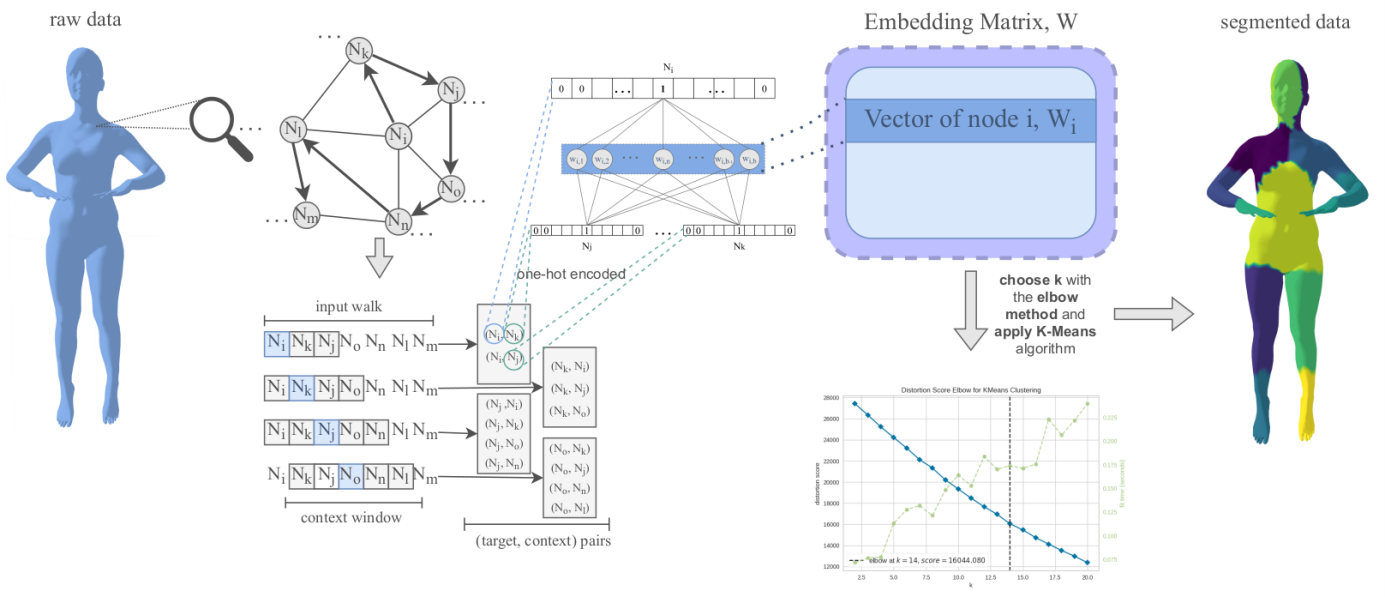M.S. Candidate: Talya Tümer Sivri
Program: Multimedia Informatics
Date: 02.12.2022 / 14:00
Place: Computer Engineering - A105
Abstract: Modeling, texture mapping, shape compression, simplification, and skeleton extracting are popular and essential topics in mesh segmentation applications. As it serves various purposes in computer science, the mesh segmentation problem is an active and prominent research area. With the help of growing machine learning, deep learning algorithms, and computation power, different methods have been applied to solve the 3D mesh segmentation problem more efficiently. In this thesis, we solve the 3D mesh segmentation problem from a different perspective. We present a novel data-centric AI approach for the segmentation of 3D meshes. We used node2vec, a semi-supervised learning algorithm, to train vector embedding representation for each node in a 3D mesh graph. This method makes the mesh data easier to process and more compact. In addition, we make dimension reduction with this method, which is very important for reducing computation costs and eliminating the curse of dimensionality. In other words, we learn information from nodes and edge connections between nodes. Then, the unsupervised learning algorithm K-Means was used to cluster each node according to node embedding information. Moreover, our data-centric approach is much lower in computational cost than complex models such as CNN and RNN. Instead of using complex and computationally expensive models, we apply data-centric methods to improve the raw data representation. The main contribution of this study is developing a data-centric AI framework by utilizing a node2vec embedding algorithm, machine learning, and deep learning techniques. Additionally, we adapt the cosine similarity method to compare and evaluate the node embedding vectors trained with different hyperparameters. Also, we developed a new algorithm for choosing the optimal cluster number, calculated with geodesic distance on the 3D mesh. Thus, we provide competitive results compared to the state-of-the-art mesh segmentation methods.
